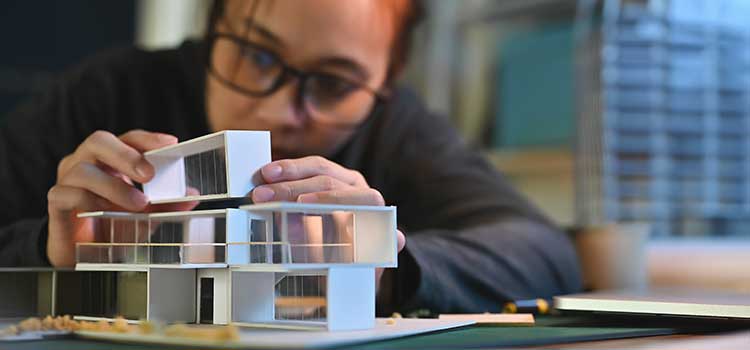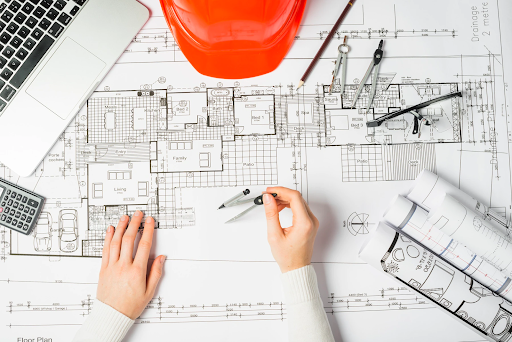Recognizing the Diverse Job Paths Available for Aspiring Architect
As an ambitious Architect, you have a world of job courses waiting for you. Whether you're drawn to typical style or the nuances of lasting layout, there's a niche that aligns with your interests.
Standard Style: Designing Structures and Frameworks
Conventional design concentrates on designing buildings and frameworks that blend capability with aesthetic allure. As you explore this field, you'll value the elaborate equilibrium in between type and purpose. You'll learn to draw motivation from historical designs, including aspects like symmetry, materials, and craftsmanship. Your layouts can show cultural heritage, showcasing regional practices while meeting modern demands.
You'll develop skills in drafting, model-making, and site evaluation, allowing you to envision and communicate your ideas effectively. Engaging with customers, you'll require to recognize their vision and translate it right into feasible layouts.
Moreover, developing codes and sustainability methods are crucial in your job, ensuring your frameworks are risk-free and eco-friendly. As you grow in your job, you'll find opportunities in property, industrial, or perhaps repair projects, each offering distinct challenges. Embracing typical architecture paves the way for a fulfilling career that admires the past while shaping the future.
Urban Preparation: Shaping Areas and Public Spaces
As a hopeful Architect, you can play a necessary function as an urban planner, changing just how communities communicate and function. By using community interaction strategies, you'll ensure that homeowners have a voice fit their environment. Plus, incorporating lasting style principles will assist create rooms that not just satisfy today's demands yet also safeguard the future.
Function of Urban Planners
While lots of could believe of designers as the single enthusiasts behind structures, city planners play a necessary function in shaping the more comprehensive landscape of areas and public spaces. By collaborating with various stakeholders, you'll aid create parks, transportation systems, and property areas that promote social interaction and access. Your experience in spatial design and area characteristics allows you to imagine future development while protecting cultural heritage.
Area Interaction Strategies
Efficient community interaction approaches are important for city coordinators to guarantee that the voices of citizens are heard and valued in the planning procedure. To cultivate purposeful discussion, you ought to focus on open forums and workshops where community members can share their ideas and issues. Usage surveys and social networks to get to a more comprehensive audience, making sure diverse viewpoints are included. Working together with local companies can boost depend on and help with deeper links. It is very important to supply clear info concerning decision-making procedures and proposed projects, permitting citizens to really feel educated and empowered. By actively including and listening feedback, you'll create areas that show the neighborhood's needs, ultimately causing even more successful and sustainable city settings. Welcome transparency and constant dialogue for enduring impact.
Lasting Design Principles
When designing metropolitan spaces, incorporating sustainable layout concepts is vital for creating settings that flourish both ecologically and socially. Take into consideration incorporating green spaces, like parks and gardens, to improve biodiversity and boost air quality.
Creating with water preservation in mind is likewise vital-- think of rainfall gardens and absorptive surfaces to take care of stormwater. Involving community participants during the planning process guarantees that the rooms you develop meet their requirements and urge social communication. By embracing these principles, you'll add to vivid, sustainable city landscapes that profit everybody.

Landscape Design: Producing Sustainable Outside Environments
As you check out landscape design, you'll find necessary style concepts that develop practical and gorgeous outdoor rooms. Sustainable practices play a vital function in guaranteeing these settings flourish while minimizing environmental effect. Plus, you'll find a range of occupation possibilities that allow you to make a real distinction in exactly how people communicate with nature.
Design Principles in Landscape
Comprehending layout concepts in landscape architecture is vital for producing sustainable outside atmospheres that harmonize with nature. You'll require to contemplate components like scale, proportion, and balance to assure your designs really feel natural and inviting. Incorporating indigenous plants not just boosts biodiversity however likewise reduces water use, making your landscape resistant. Consider the circulation of space and exactly how individuals interact with it; pathways and seating locations need to invite expedition and leisure. Furthermore, focus on seasonal changes, developing with products that match the environments year-round (Architect). By focusing on sustainability and looks, you can produce exterior spaces that enhance the area and advertise well-being. Accepting these concepts will certainly establish a solid foundation for your job in landscape style.
Sustainable Practices Overview
Lasting practices in landscape design not only concentrate on aesthetic appeals but additionally prioritize environmental health and resource conservation. You can make areas that promote dirt wellness, such as exercising and making use of natural materials permaculture concepts. Ultimately, these methods assure your styles benefit both people and the atmosphere for years to come.
Career Opportunities Exploration
With a solid structure in sustainable techniques, landscape design provides a selection of job courses that allow you to make a significant effect on the atmosphere. You might work as a landscape designer, producing cosmetically pleasing and functional outside areas, or focus on environmental reconstruction, helping to revitalize damaged environments. Urban planners usually collaborate with landscape designers to produce green spaces in city settings, enhancing city livability. If you're enthusiastic concerning education and learning, think about ending up being a landscape style instructor, motivating future generations. Furthermore, you could deal with nonprofits concentrated on ecological sustainability or engage in research to introduce new techniques. Each path not only shapes stunning atmospheres however likewise fosters a much healthier earth for future generations.
Lasting Layout: Focusing on Eco-Friendly Practices
As you discover your occupation in design, accepting environment-friendly practices can set you apart in a competitive field. Sustainable style concentrates on developing buildings that decrease environmental impact while improving owner health. By incorporating renewable materials, energy-efficient systems, and sustainable building methods, you'll contribute to a greener future.
Beginning by getting expertise of environment-friendly qualifications like LEED or BREEAM, which can boost your credentials. Think about how natural light, ventilation, and thermal effectiveness can enhance layout. Work together with designers and environmental professionals to introduce options that reduce waste and preserve resources.
Don't fail to remember the value of neighborhood participation-- interesting local stakeholders can inspire layouts that harmonize with the setting. As clients progressively focus on sustainability, your know-how in eco-friendly practices will not just attract tasks yet likewise fulfill your interest for accountable style. Accept this important element of the occupation, and enjoy your profession grow.
Historical Conservation: Safeguarding and Recovering Social Heritage
While you commence on your architectural journey, consider the vital role of historical conservation in maintaining our social heritage. This area concentrates on the defense and restoration of substantial structures, websites, check out this site and structures that inform the stories of our past. By taking part in historic conservation, you'll aid guard the building legacy that shapes community identification.
As a historic conservation Architect, you'll evaluate historic value and analyze the problem of frameworks. You'll work carefully with preservationists and historians to ensure genuine repair methods are employed. This job course allows you to mix creative thinking with research, allowing you to create options that value original products and craftsmanship.
Your work not only adds to sustainability by recycling existing buildings however additionally cultivates a feeling of satisfaction within neighborhoods. Accepting this path will certainly help you come to be a guardian of background, preserving the tales and visual appeals that enhance our lives.
Inside Design: Enhancing Indoor Spaces
Historic conservation and indoor design both share a commitment to enhancing the built setting, yet they go to this web-site concentrate on different elements. While historic preservation highlights preserving a structure's historic and cultural worth, interior design zeroes in on enhancing indoor areas for performance and appearances.
As an ambitious Architect, you'll find that interior design permits you to blend creative thinking with technological abilities. You'll design areas that not just look good but likewise promote convenience and efficiency. This field involves recognizing exactly how light, shade, and products interact within a space, influencing state of mind and use.
You'll function on numerous projects, from domestic homes to industrial offices, guaranteeing that each setting meets the needs of its passengers. By focusing on individual experience, you can transform interiors right into inspiring and functional areas, making a considerable influence on how individuals engage with their environments. Welcome the opportunity to boost interior environments and shape the method people function and live.
Industrial Style: Combining Functionality With Aesthetics
Industrial design plays a vital function in creating items that flawlessly blend appearances with capability, guaranteeing that what you use day-to-day is not just visually attractive but also functional. As a hopeful Architect, you could engage yourself in this area, concentrating on developing everything from furnishings to consumer electronic devices. Your job includes recognizing customer demands, materials, and producing processes, permitting you to develop cutting-edge solutions that improve everyday experiences.
In industrial style, you'll typically team up with marketing professionals, designers, and suppliers, making certain that your styles are not only stunning however likewise possible. This career course supplies a vibrant environment where creative thinking meets usefulness, making it a rewarding option for designers interested in shaping the products of tomorrow.
Regularly Asked Questions
What Educational Accreditations Do I Required to Become a Designer?
To come to be an architect, you'll require an expert degree in style, normally a Bachelor's or Master's. In addition, you'll have to complete an internship and pass the Architect Enrollment Exam to practice legitimately.
Exist Accreditation Demands for Various Building Job Paths?
Yes, there're qualification needs for numerous architectural courses. Architect. You'll require to pass tests, total internships, and occasionally seek specialized training, relying on your selected emphasis, like landscape style, metropolitan style, or historical preservation
What Software Application Skills Are Vital for Designers Today?

Just How Can I Gain Practical Experience While Researching Style?
You can get functional experience by interning at building companies, joining style competitors, volunteering for community jobs, or working together with schoolmates on real-world tasks. These possibilities try these out enhance your abilities and construct valuable connections in the market.
What Task Opportunities Exist Outside Standard Architecture Firms?
You can check out numerous work possibilities outside conventional style companies, like urban preparation, interior style, landscape architecture, building and construction monitoring, actual estate growth, or even roles in sustainability consulting. Each deals unique obstacles and benefits.
Whether you're drawn to conventional architecture or the nuances of lasting design, there's a specific niche that straightens with your rate of interests.When creating metropolitan spaces, incorporating sustainable layout concepts is important for creating environments that grow both environmentally and socially.As you discover landscape style, you'll discover important design concepts that create functional and attractive outside rooms.Comprehending style principles in landscape architecture is crucial for producing sustainable outside environments that balance with nature.In commercial style, you'll typically work together with engineers, suppliers, and marketing experts, guaranteeing that your designs are not only stunning however likewise practical.